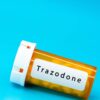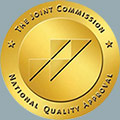There is a variety of detox methods available, each offering varying levels of support.
Several factors contribute to which type of detox may best befit an individual beginning his or her treatment process. The type of drug abused, length of time an individual abused drugs, the potency of the substance abused, the frequency and amount abused, the personal health history of the individual, whether the individual abused other substances simultaneously, as well as the presence of any co morbid mental health disorders should all be considered when deciding which type of detox method is likely to yield the most successful results.
At Home Detox
The at home detox method is when an individual attempts to undergo detox at home without any medical supervision. At home detox can be a viable option for individuals who are withdrawing from certain drugs (e.g., cocaine, amphetamines, etc.) as certain substances do not necessarily cause severe physical withdrawal symptoms, but at home detox can be highly dangerous for individuals detoxing from other substances (e.g., alcohol, barbiturates, benzodiazepines, heroin, etc.). There is a myriad of risks associated with detoxing from drugs and/ or alcohol at home. Some examples of risks as well as withdrawal symptoms that may occur during an at-home detox could include but are not limited to the following, provided by the Substance Abuse and Mental Health Services Administration (SAMHSA):
- Nausea
- Vomiting
- Constipation
- Diarrhea
- Fever
- Headaches
- Increased heart rate
- Seizures
- High blood pressure
- Panic attacks
- Muscle pain
Typically, the onset of withdrawal symptoms will occur approximately six to twelve hours after one’s last ingestion of drugs and/ or alcohol. Attempting to detox alone can be unsafe as it is impossible to determine how severe one’s withdrawal symptoms will be until he or she is in the process of detoxing. The most dangerous withdrawal symptom associated with detoxing from alcohol, for example, is called delirium tremens. Delirium tremens is scientifically defined as “the most severe form of ethanol withdrawal, manifested by altered mental status (global confusion) and sympathetic overdrive (autonomic hyperactivity), which can progress to cardiovascular collapse.” Delirium tremens is a medical emergency, and when not medically tended to can become fatal. Although an at home detox is feasible it is not uncommon for an individual to return to the use of his or her drug of choice due to the discomforts of the withdrawal symptoms. It is also important to note that individuals who undergo detox at home place themselves at greater risk of overdose.
For Information and Support
Contemplating detox can be a very challenging time. Before any individual can begin to work on the underlying issues contributing to their substance abuse problem, they must be separated from the substances in their systems. If you are concerned for yourself or a loved one regarding substance abuse, and/ or addiction we recommend reaching out for help as soon as possible. The earlier you seek support, the sooner you and your loved ones can return to leading happy, healthy, and fulfilling lives. Sherwood Detox offers a stand-alone detox program. For additional information on detox, please do not hesitate to contact us at: 818-626-9959 or feel free to email us anytime. One of our trusted counselors is available to talk and discuss how we can best support you on your journey.









